Founded in 1125 by the Countess Dª. Teresa de Leão, the mother of the first king of Portugal, Ponte de Lima is one of the oldest and most beautiful towns not only in Northern Portugal but in the whole country!
Fortified in the 14th century due to its strategic position, this medieval town was protected by ramparts with nine towers and people could only enter through one of six gates.
In the 18th century, the town grew more and more and, because of that, most of its ramparts were destroyed. From that period, only a gate and two towers (one of which became a prison) were left as well as the charm and authenticity that so well characterise Ponte de Lima.
Disclosure: This post may contain affiliate links, meaning i get a commission if you decide to make a purchase through my links, at no cost to you. Please read my disclosure for more info.
When you go to Northern Portugal, make sure you visit Ponte de Lima, a place that you can’t miss not only because of its history but also for its beauty and authenticity.
What to visit in Ponte de Lima
Sommaire
- What to visit in Ponte de Lima
- Historic centre:
- 1. Roman and medieval bridge
- 2. Arnado Park
- 3. Museu do Brinquedo
- 4. Festival Internacional de Jardins
- 5. Largo de Camões
- 6. Capela das Pereiras
- 7. Centro de Interpretação e Promoção do Vinho Verde
- 8. Centro de Interpretação da História Militar
- 9. Igreja Matriz
- 10. Torre de São Paulo and Torre da Cadeia Velha
- 11. Avenida dos Plátanos
- 12. Museu dos Terceiros
- Ponte de Lima outskirts:
- Where to sleep in Ponte de Lima
Historic centre:
1. Roman and medieval bridge
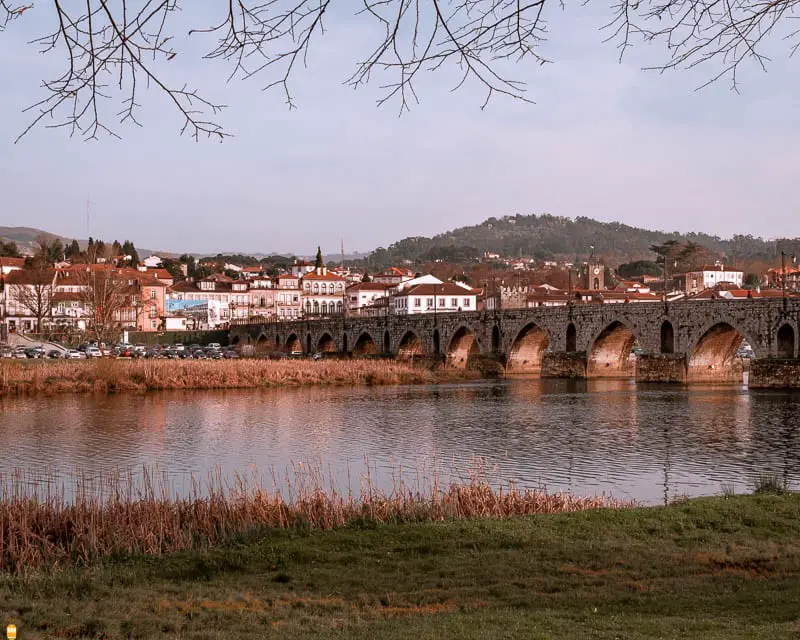
This bridge was, for a long time, the only way to cross Lima river and is today the landmark of this town.
Built 2000 years ago by the Romans to connect Bracara Augusta (present day Braga, in Portugal) to Asturica (present day Astorga, in Spain), this bridge was enlarged during the Middle Ages because of the riverbed deviation.
Nowadays, the bridge continues to play a very important role in this region: pilgrims using the Portuguese Way of Saint James cross this bridge and it is because of this bridge and the river that flows through this place that the town is called Ponte de Lima.
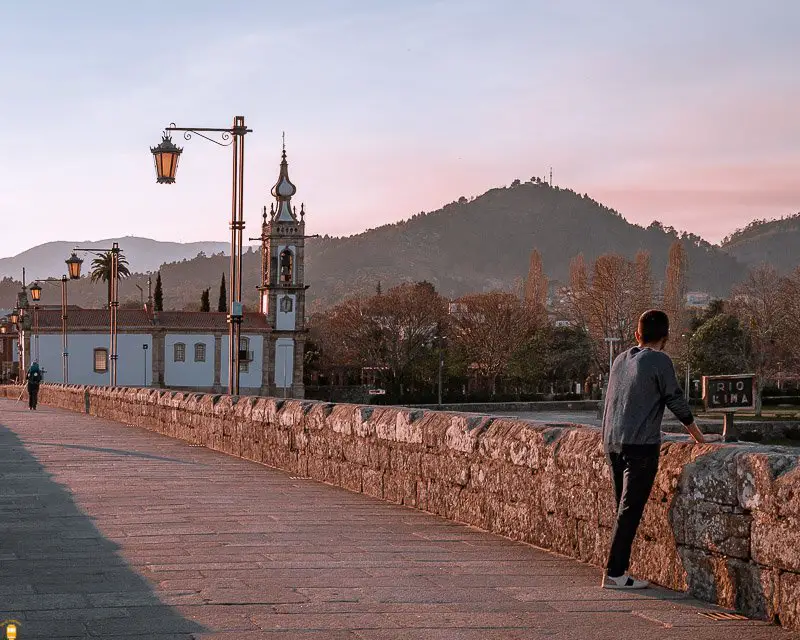
When you cross the bridge you will surely pass by pilgrims heading to Santiago de Compostela – imagine how it would be in the Roman and Middle Ages. Take the opportunity to look to your left – on one of the river banks you’ll find statues of Roman soldiers and on the other you’ll see the statue of their captain.
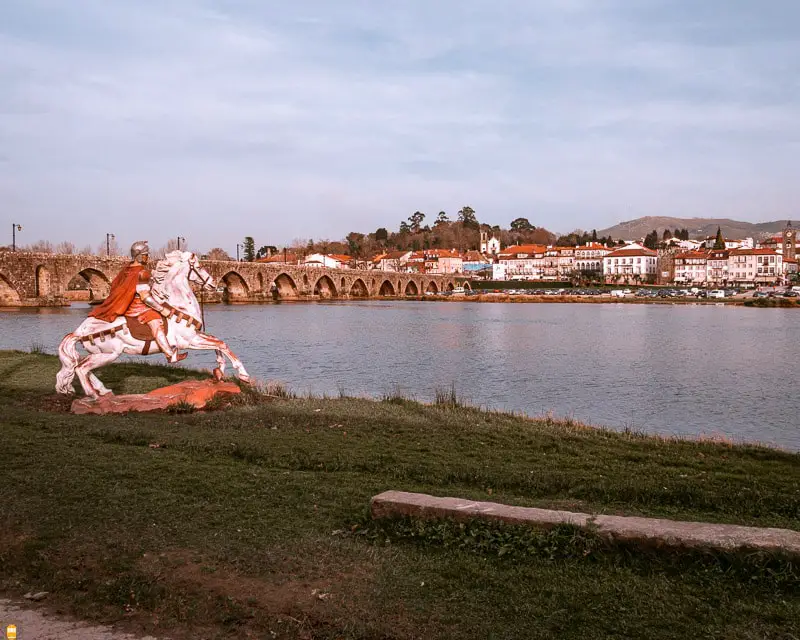
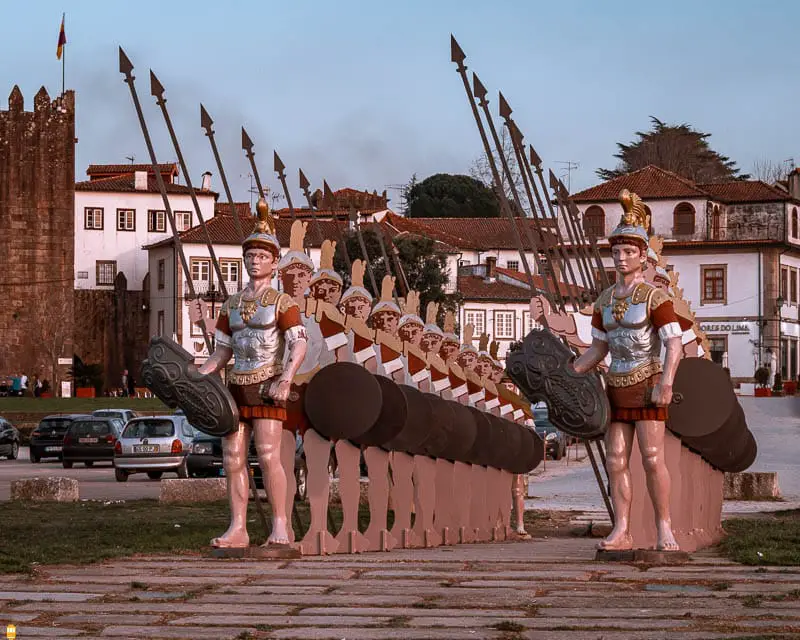
According to legend, in AD 135 the Roman soldiers refused to cross Lima river. The beauty of the place led them to believe that they were facing the river of forgetfulness (Lethe river), a river that would erase their memories if they crossed or drank its waters.
Upset with this situation, the Roman captain Decius Junius Brutus decided to cross the river to show them they were mistaken. As soon as the captain got to the other side of the river, he started to call the soldiers by their names so that they could see they weren’t facing the river of forgetfulness.
After crossing the river, the Roman troops headed north and conquered Galicia, a Spanish region.
2. Arnado Park
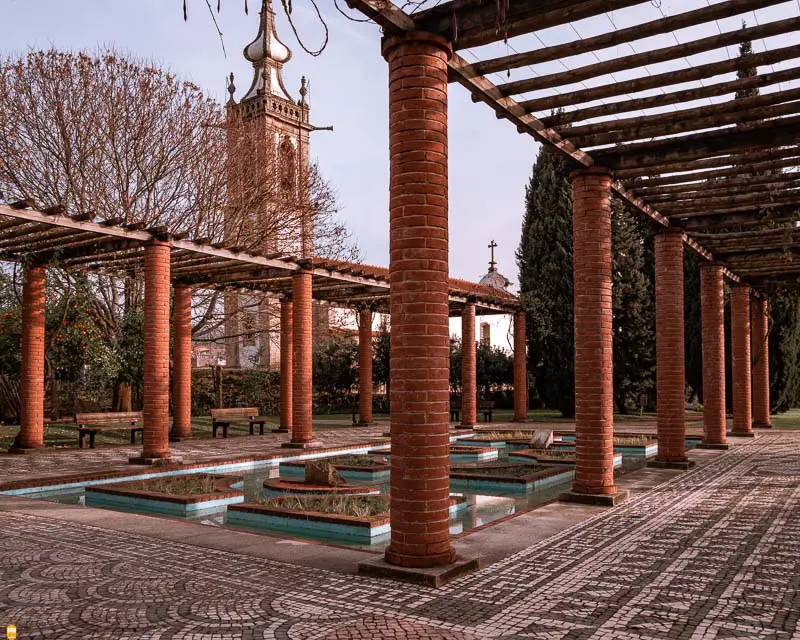
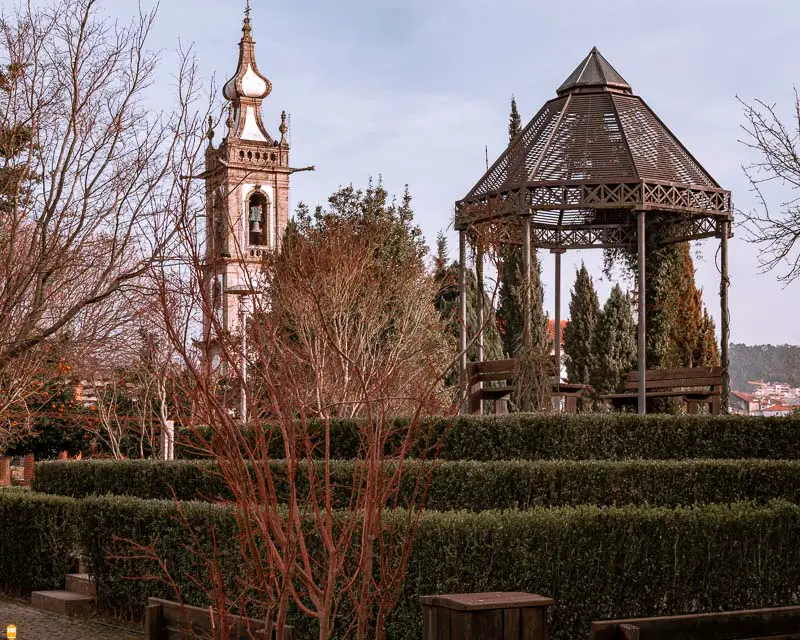
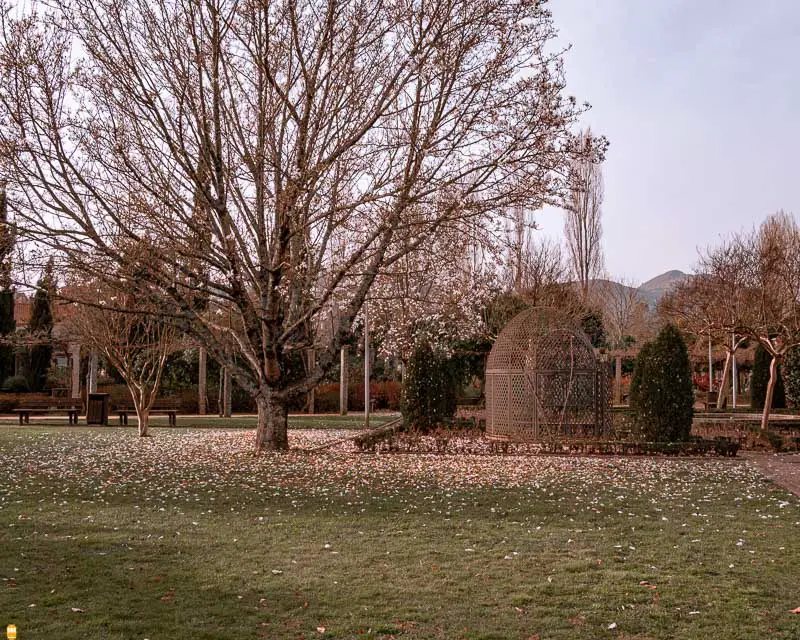
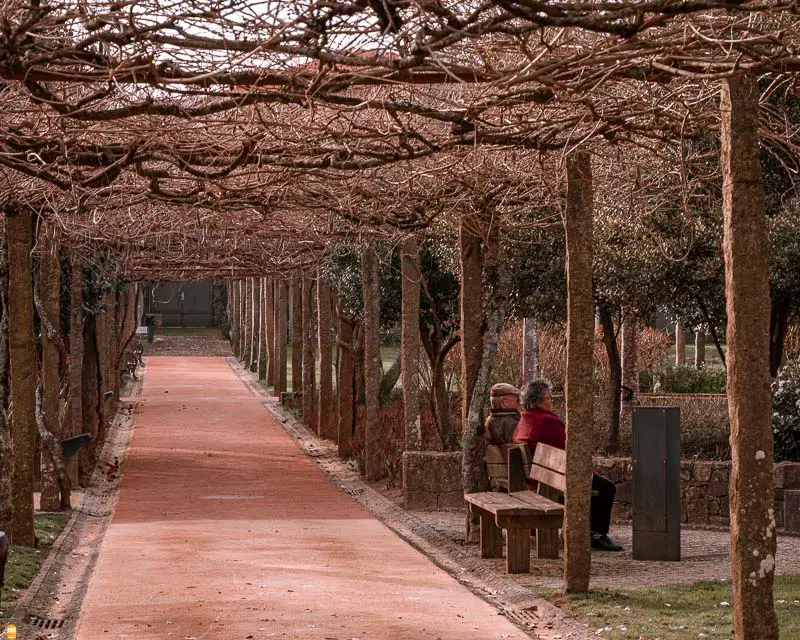
Arnado Park is an arquitectural theme park that has different styles from all over the world, like the Roman garden, the Labyrinth, inspired by the Minotaur legend, the Renaissance, of which the water played an important role, and the Baroque style that reflects the splendour of French gardens.
Inside the park, you’ll find the Centro de Interpretação do Território (literally Territory Interpretation Centre) where you can discover more about the traditions and daily life of the inhabitants of Ponte de Lima.
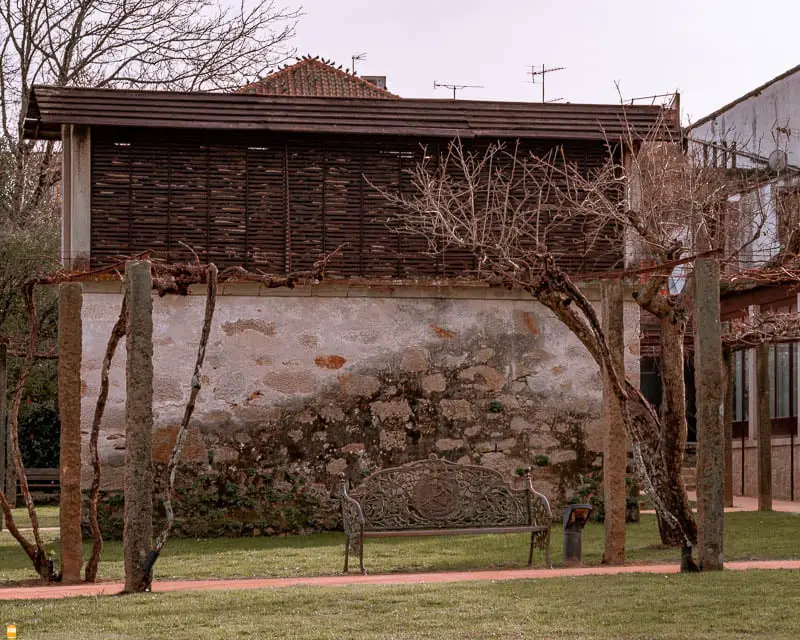
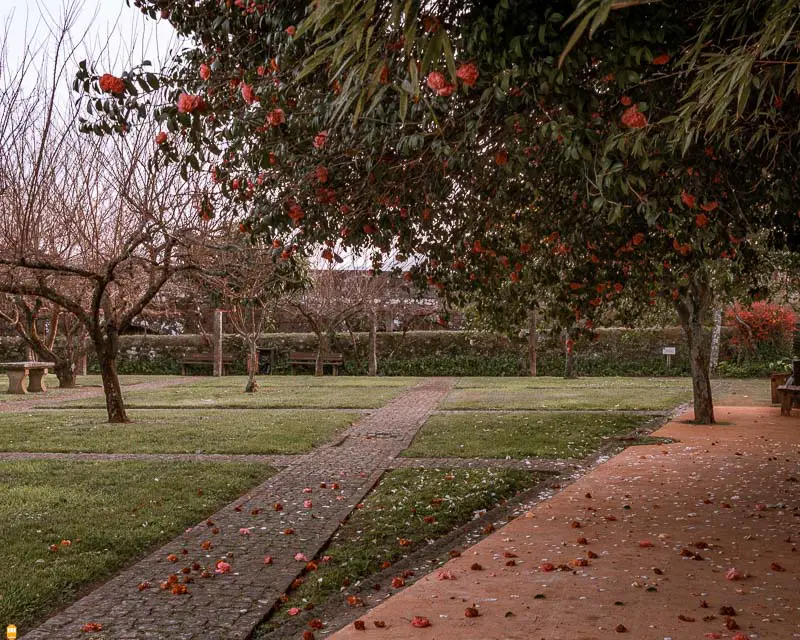
The visit to this museum meant a lot to me since I spent my childhood seeing the same tools being used by my family in farming, baking bread, producing wine and in cattle farming.
These traditions are disappearing, however, if you visit the villages close to Ponte de Lima, you will still find people working in the same conditions as they worked 20 years ago.
3. Museu do Brinquedo

Located close to the Roman bridge, in the Arnado house, the Toy Museum gives its visitors the opportunity to discover the Portuguese toys manufacturers from the 19th century up until 1986 (end of the Portuguese production that coincided with Portugal joining the European Economic Community).
At this museum, you can also learn more about the techniques of manufacturing, the materials used and, of course, the toys that the Portuguese children used to play with.

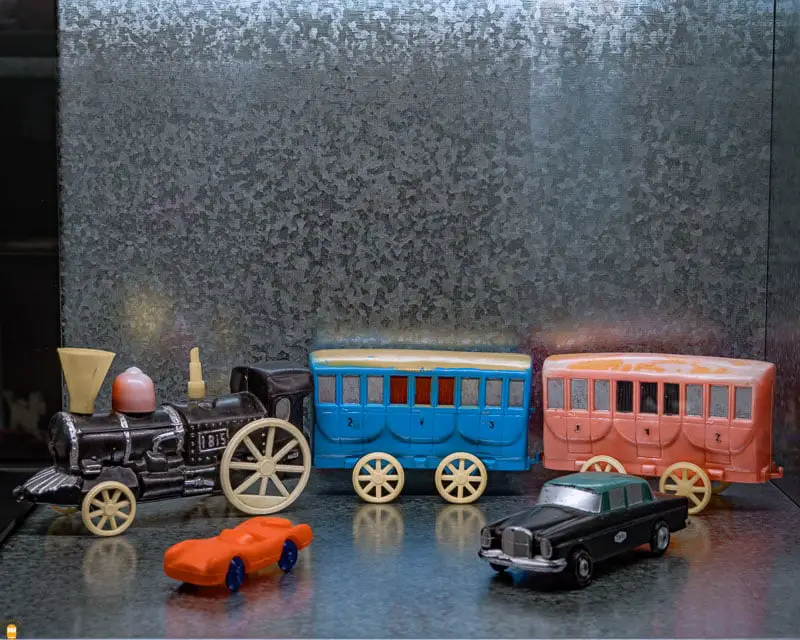
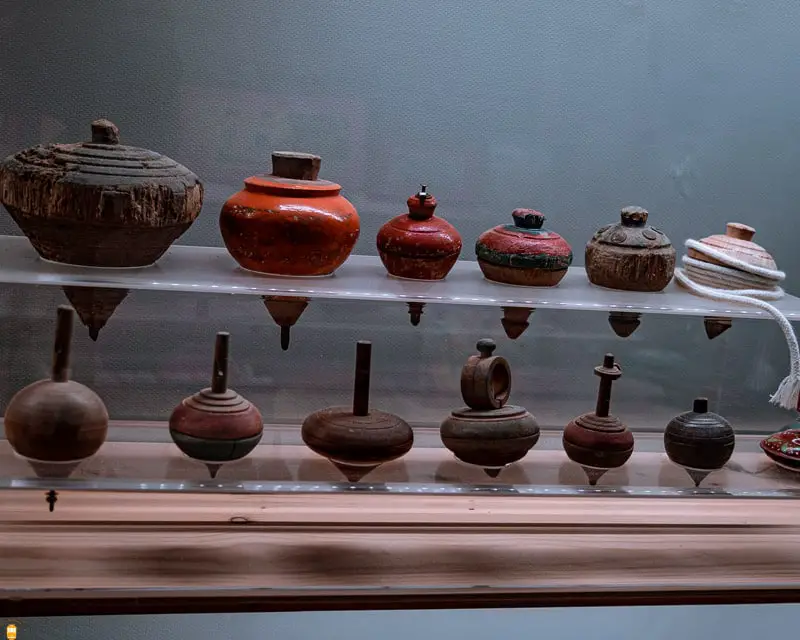

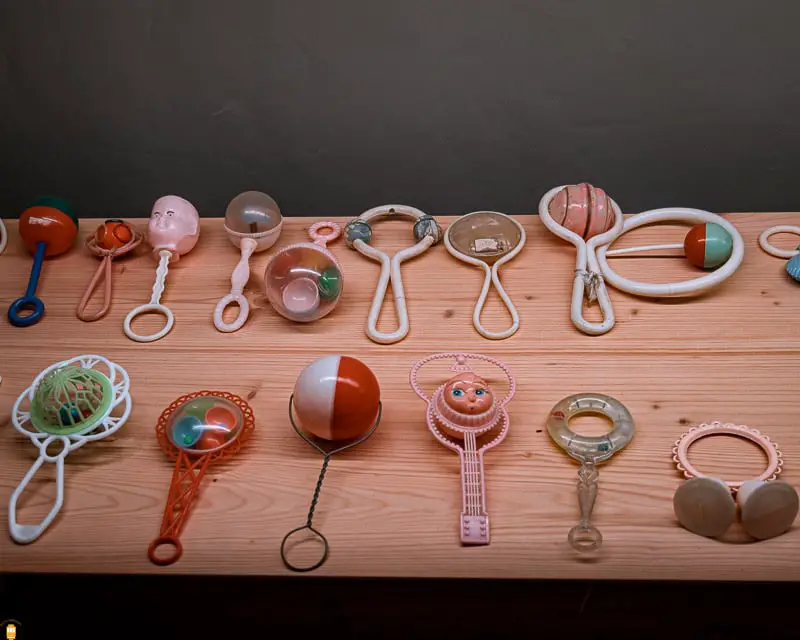

After leaving the Arnado house, you’ll pass by a small garden where you can access the last two rooms: in one of them you can admire an animated scale model portraying a North-European city and, in the other room, a scale model with the most beautiful Portuguese monuments.
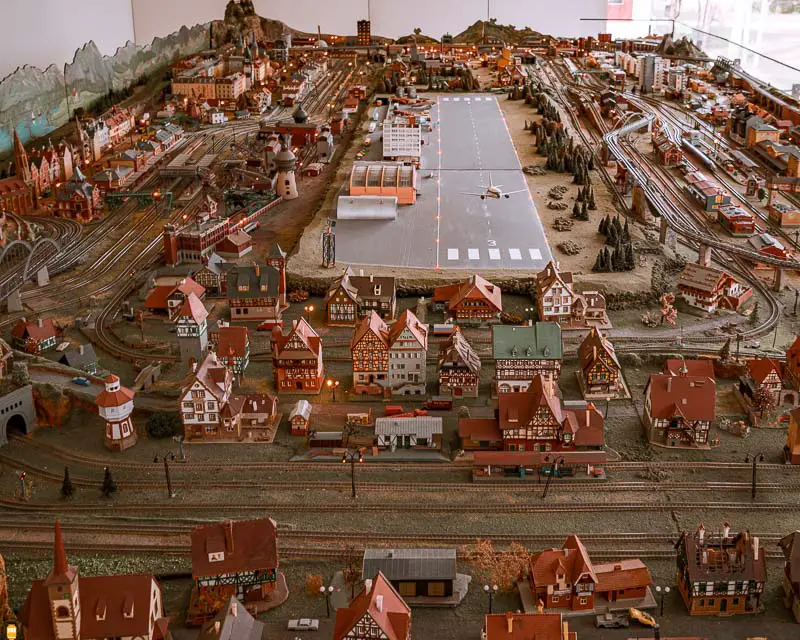
I loved these two models, especially the last one, because people can give their personal touch by animating the model with a train whistle, a bell toll, a rooster crowing, etc.
Information: apart from the Toy Museum, the Arnado house is also an accommodation for the pilgrims of the Way of St. James.
4. Festival Internacional de Jardins
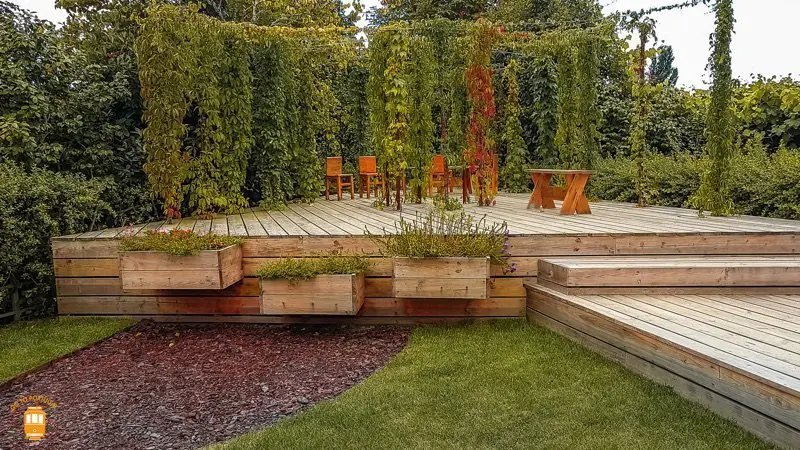
The Ponte de Lima International Garden Festival is a unique initiative in Portugal and was created in 2005, bringing back the love and cult for the garden and gardening.
This contest has contestants from many countries, including Portugal, and then a jury selects the winners. Every year, from May to October, a new theme is presented and that allows the renovation of this festival.
5. Largo de Camões
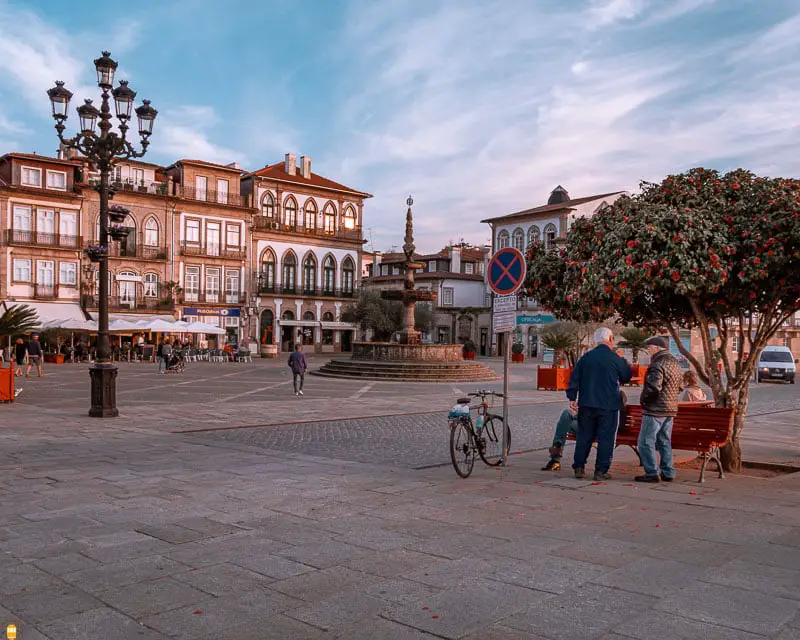
Designed after the demolition of the ramparts, the square Largo de Camões is another postcard of this town. In the centre of this square, you can admire a beautiful fountain dating back to 1603 and surrounding the square you’ll find many typical buildings with cafes in the ground floors.
Take the opportunity and rest for a while in one of these cafes, have a cup of coffee and admire the sunset.
6. Capela das Pereiras

Built in 1525 and renovated in 1818, the chapel Capela de Nossa Senhora da Misericórdia das Pereiras is located in the old quarter Bairro das Pereiras, in the uptown of the historic centre, from where you can enjoy the amazing view to the mountains and to part of the town.
7. Centro de Interpretação e Promoção do Vinho Verde
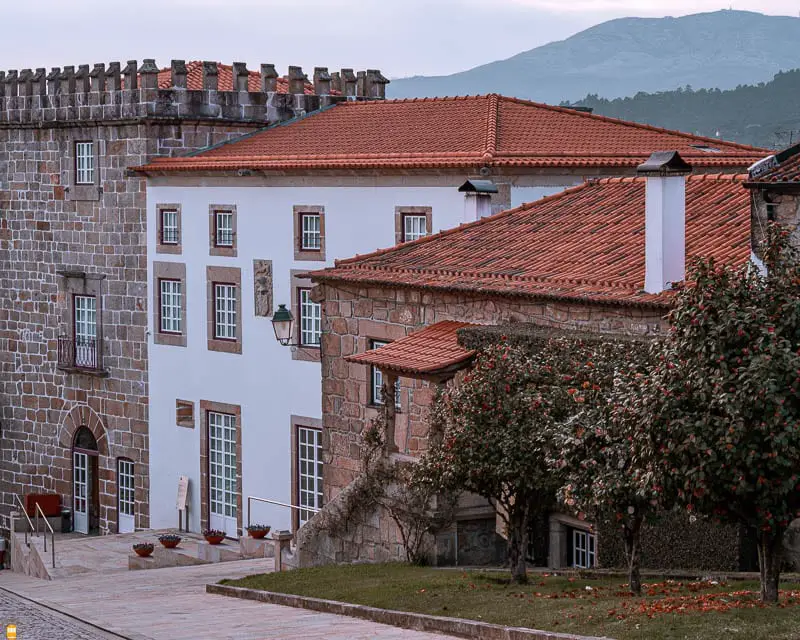
The Green Wine Interpretation and Promotion Centre is a museum that will take you on a visit through the history of this wine produced in the old province of Entre-Douro-e-Minho (northwest Portugal).
The green wine area is delimited in the south by Douro river, in the north by Minho river (natural border with Spain), in the west by the Atlantic Ocean and in the east by the mountains of Peneda, Gerês and Cabreira.
This is the biggest Portuguese delimited region and one of the biggest in Europe!
Apart from learning more about the history of this Portuguese wine, when you visit this museum you can also admire the tools and means of transportation used by the winegrowers and, in the end, you’ll have the opportunity to savour a wonderful vinho verde.
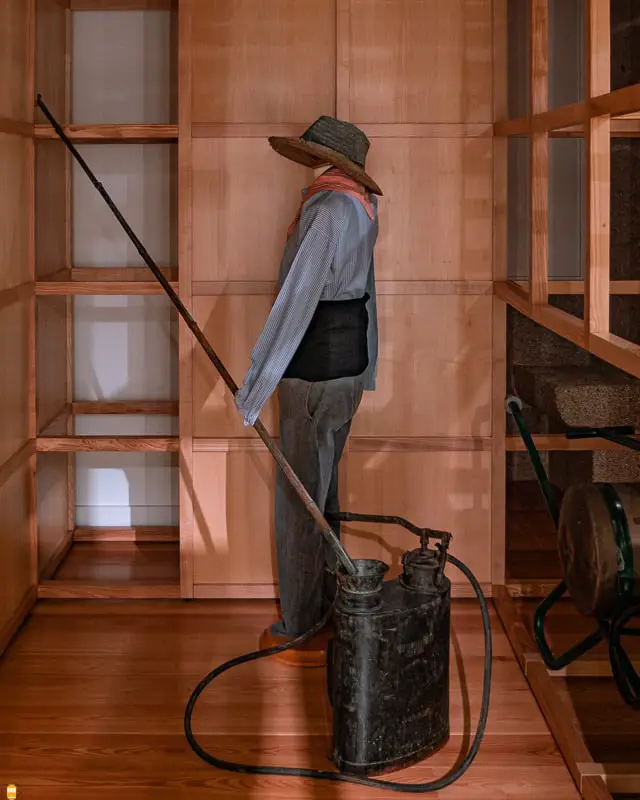
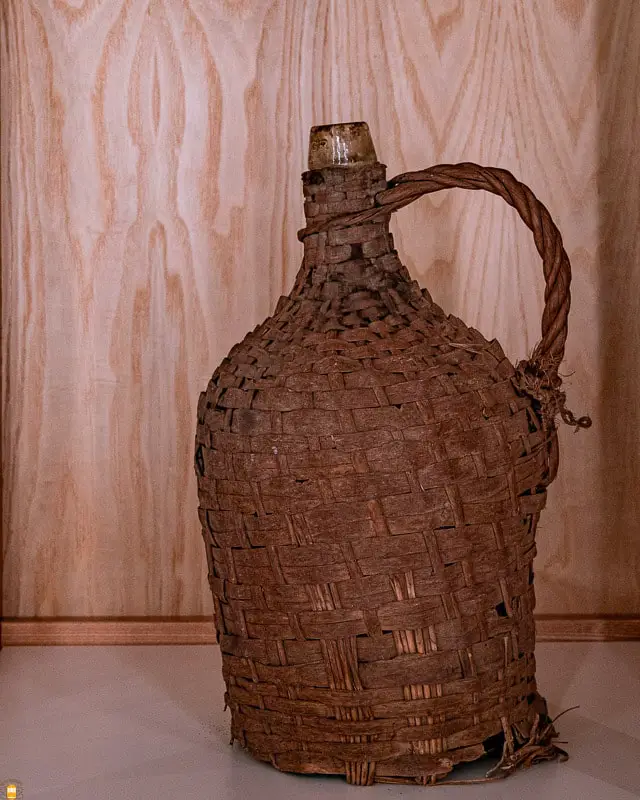
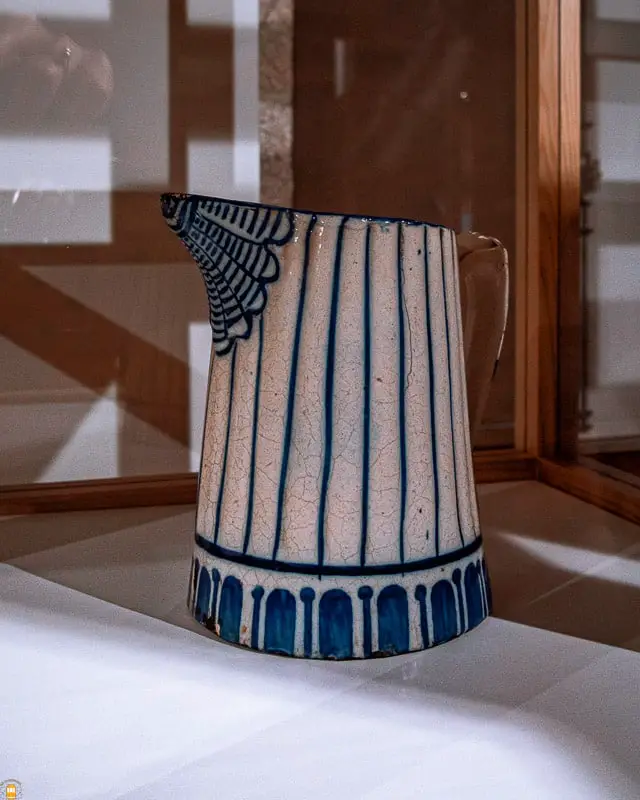
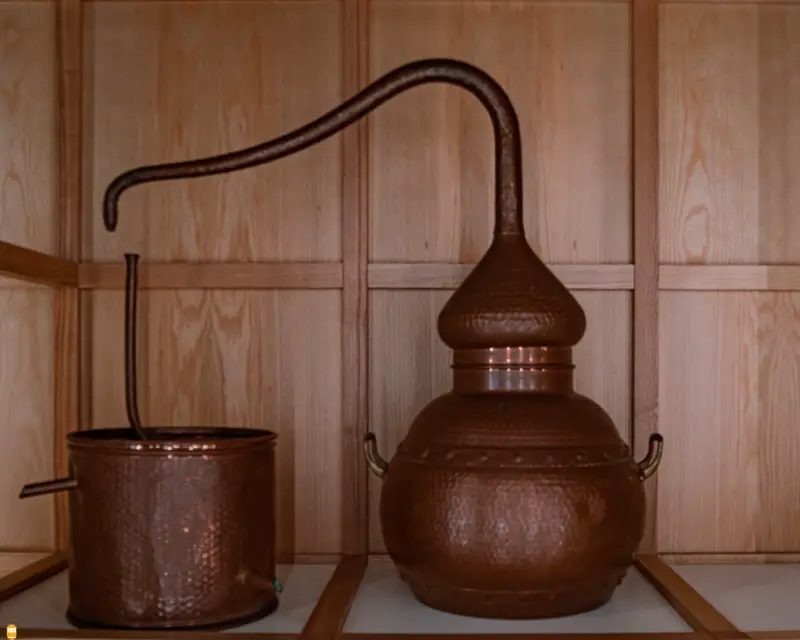
Personal opinion: visiting the Centro de Interpretação e Promoção do Vinho Verde was an amazing moment for me! I had the opportunity to learn more about the history of this wine and relive my childhood thanks to all the tools, means of transportation and videos in this museum.
I remembered when I used to do the harvest with my family, with the same baskets and wooden casks and when the transportation of the bunches of grapes was made in oxen carts.
Before discovering the next place, I suggest you go to the garden Adelino Sampaio where you can find a 16th-century pillory, location where criminals were trialled and sentenced in other times.
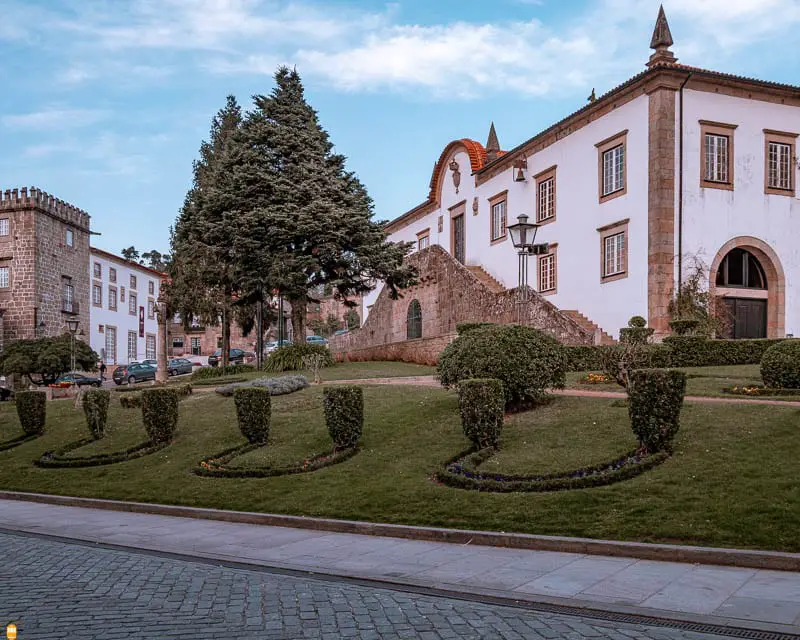
When you pass by the square Praça da República, take some time to admire the statue of the Countess Dª. Teresa de Leão who was, as I’ve mentioned before, the one who founded the town in 1125.
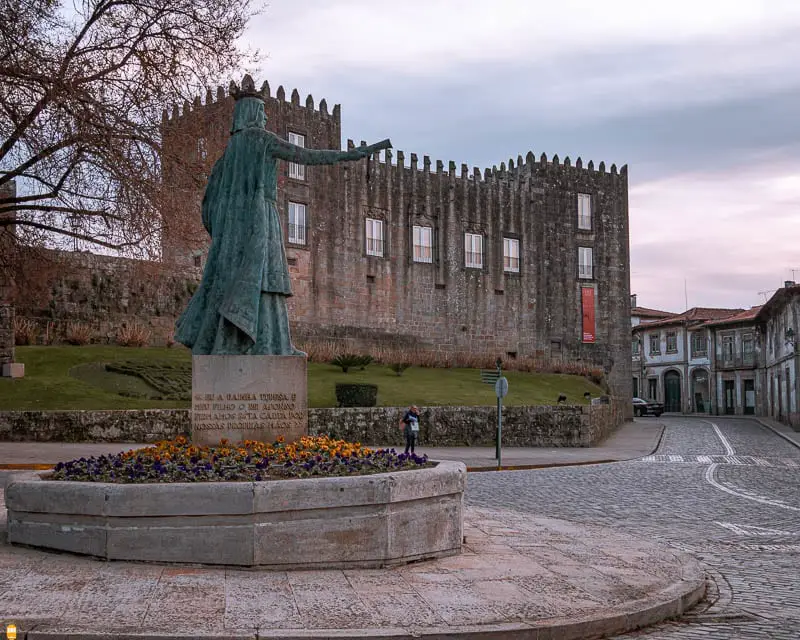
8. Centro de Interpretação da História Militar
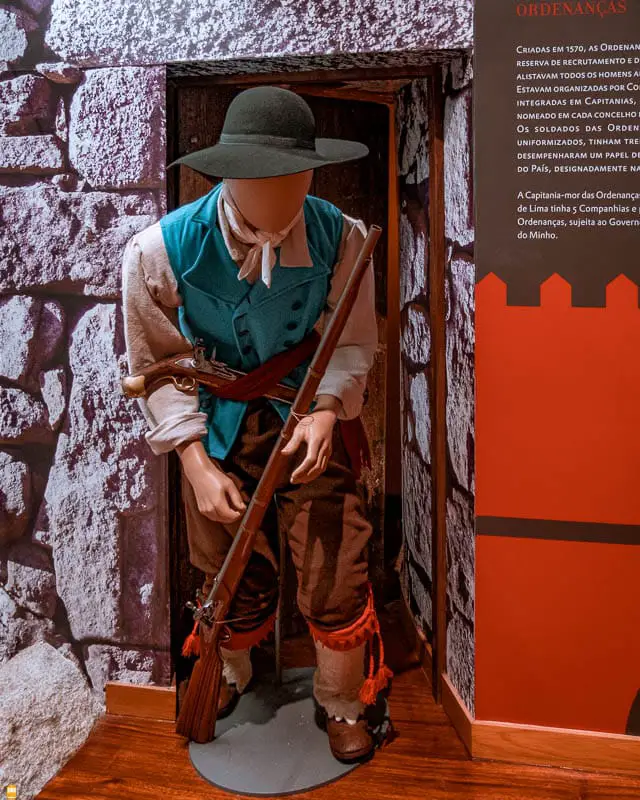
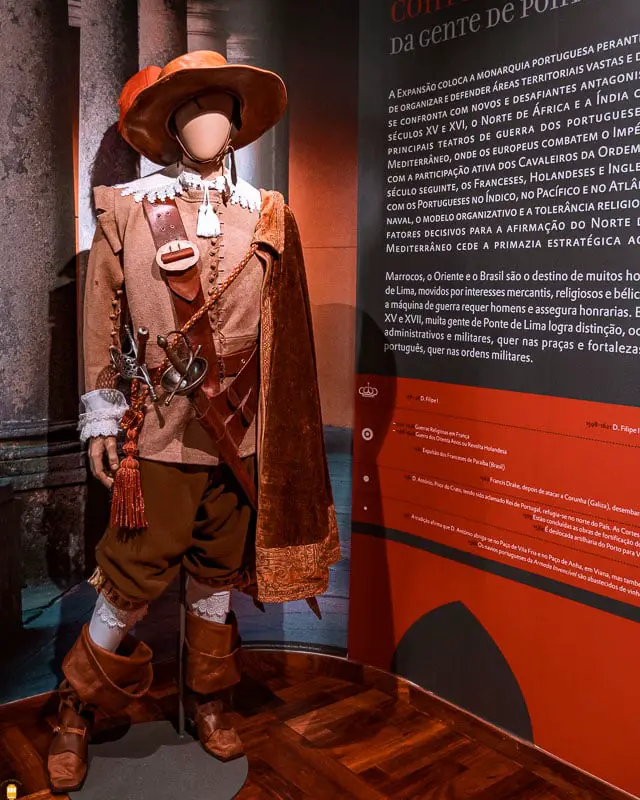
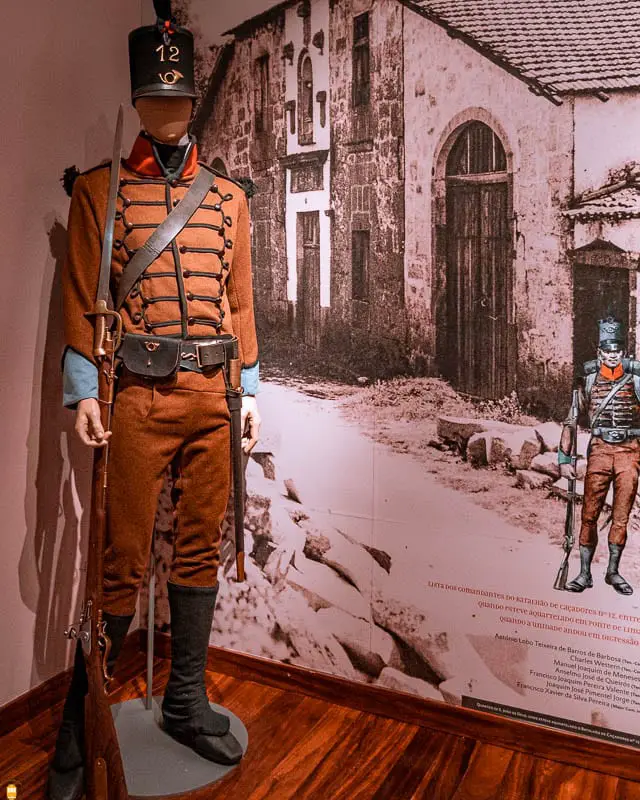

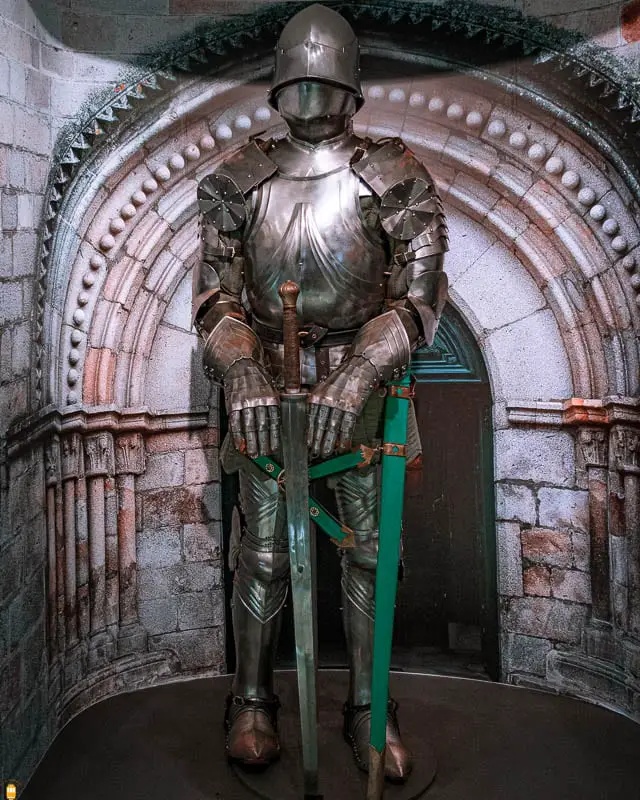
Inaugurated in 2016 by the Portuguese president, Marcelo Rebelo de Sousa, the Military History Interpretation Centre gives you the opportunity to learn more about how the region and Portugal defended their borders throughout the years from external attacks.

The museum retraces the history since the Roman Empire up to the 19th century, when the Napoleon troops invaded Portugal.
Before leaving the building, make sure you go to the upper floor to enjoy the beautiful views over the town. At this viewpoint, you’ll easily notice the junction of the Roman bridge with the medieval bridge.
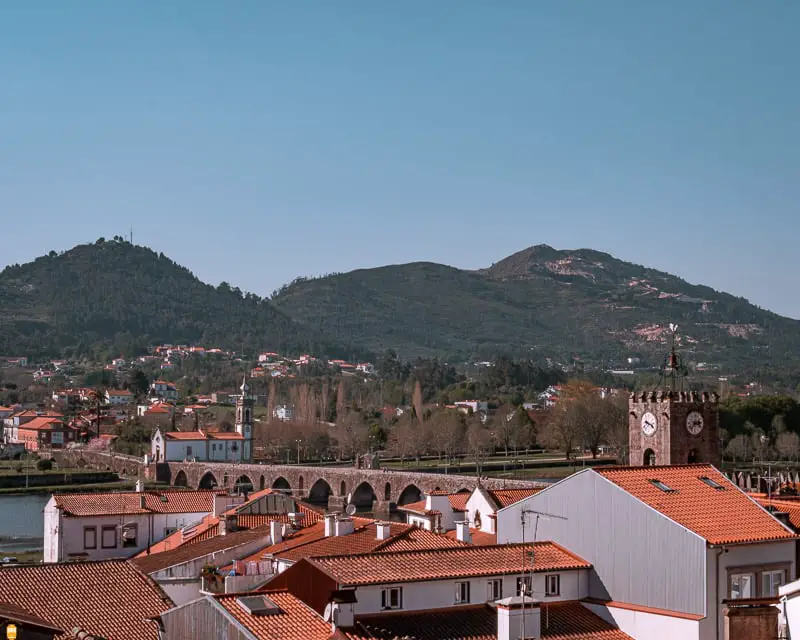
9. Igreja Matriz
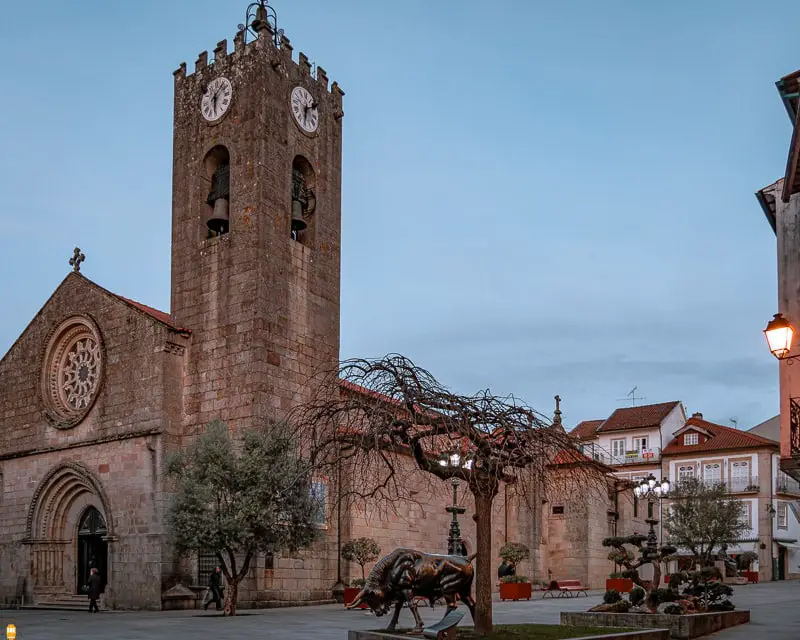
Built in the 15th century to replace a 12th-century temple that became too small for the population of Ponte de Lima, this church is one of the monuments you can’t miss!
When you visit this church, you’ll find a place with characteristic traits from several architectural styles (Roman, Gothic and Neoclassical) due to the transformations and enlargements that took place throughout the centuries.
10. Torre de São Paulo and Torre da Cadeia Velha
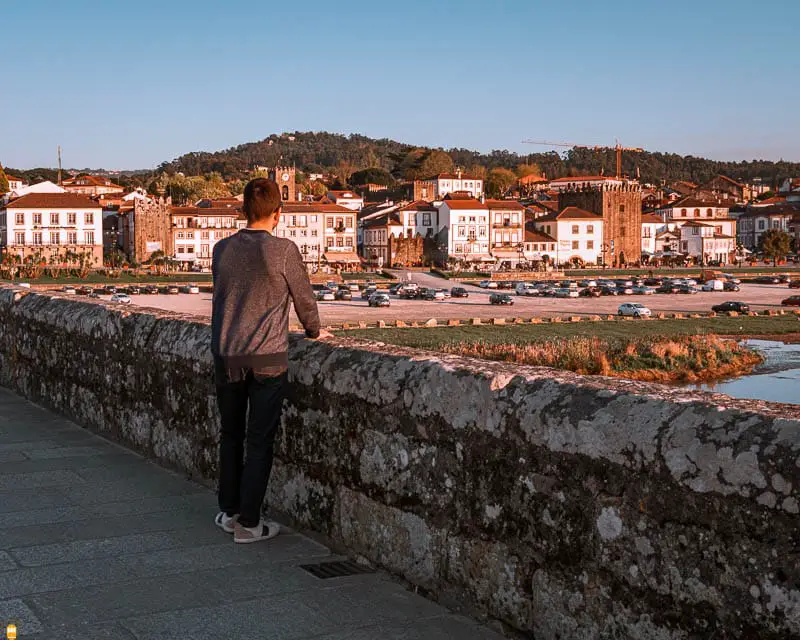
Facing the Lima river, in the street Passeio 25 de Abril, the São Paulo and Cadeia Velha towers are what remains from the ramparts of Ponte de Lima, built in the 14th century.
While you admire São Paulo’s tower, you’ll have the opportunity to notice a wonderful glazed-tile panel and the three lines marking the height reached by the three worse floods that affected the town.

As the name points out, Torre da Cadeia Velha (literally Tower of the Old Prison) was a prison from the 14th century up to the mid-60s of the 20th century.
Today, the tower displays temporary exhibitions and is the location for the Ponte de Lima Tourist Office.
Right beside Torre da Cadeia Velha, you’ll find Porta Nova (literally New Gate), one of the few entrances for the fortified town. Climb down to discover the old Jewish quarter (14th and 15th centuries) and don’t hesitate to climb to the top of the rampart to admire Ponte de Lima from another perspective.

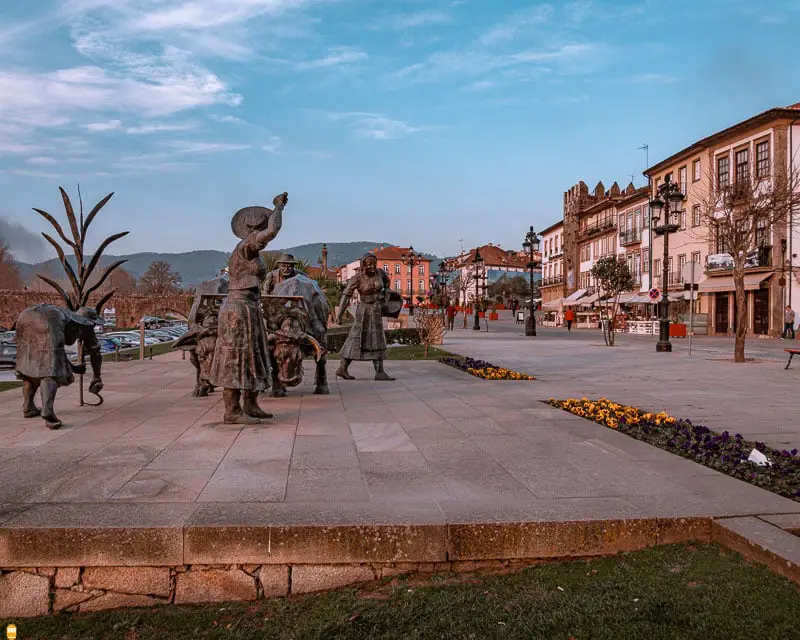
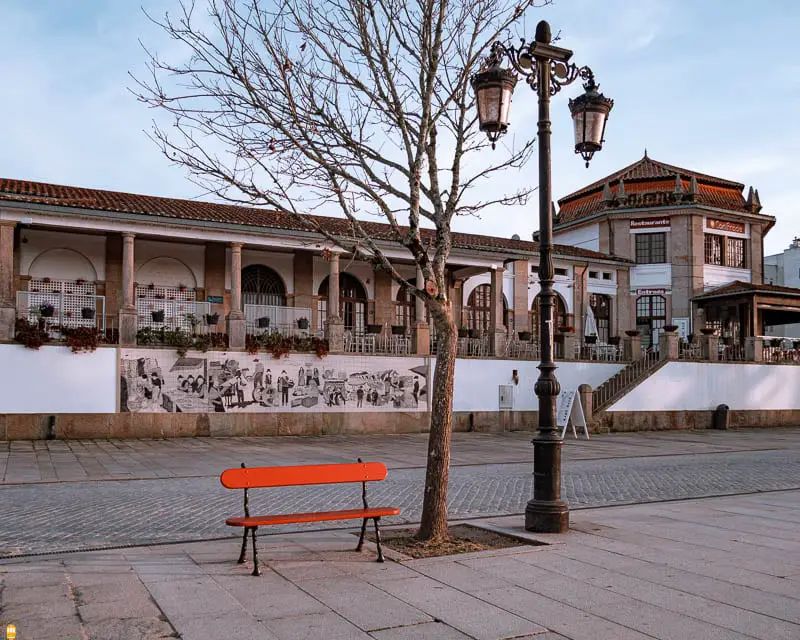
11. Avenida dos Plátanos

A completely pedestrian area, the avenue Avenida dos Plátanos is one of the favourite places of Ponte de Lima’s inhabitants to stroll and admire the river and the medieval bridge. When you go for a walk in this avenue, raise your head and be amazed with the majestic sycamores, century-old trees.
12. Museu dos Terceiros

Located right beside Avenida dos Plátanos, the museum Museu dos Terceiros can be visited at two religious houses associated to the Franciscan Order.
At the old convent Convento de Santo António dos Capuchos, that dates back to the 15th century, you’ll find a church, Senhora da Graça chapel and the sacristy. Apart from getting to know this beautiful monument, you’ll also have the opportunity to admire an amazing religious art collection.
Ponte de Lima outskirts:
13. Monte da Madalena
Monte da Madalena is, in my opinion, the most beautiful viewpoint that offers the best views over the town and its outskirts.
Located 4 km outside the historic centre, this viewpoint offers a magnificent view to the mountains surrounding Ponte de Lima, to Lima river and to the beautiful medieval bridge.
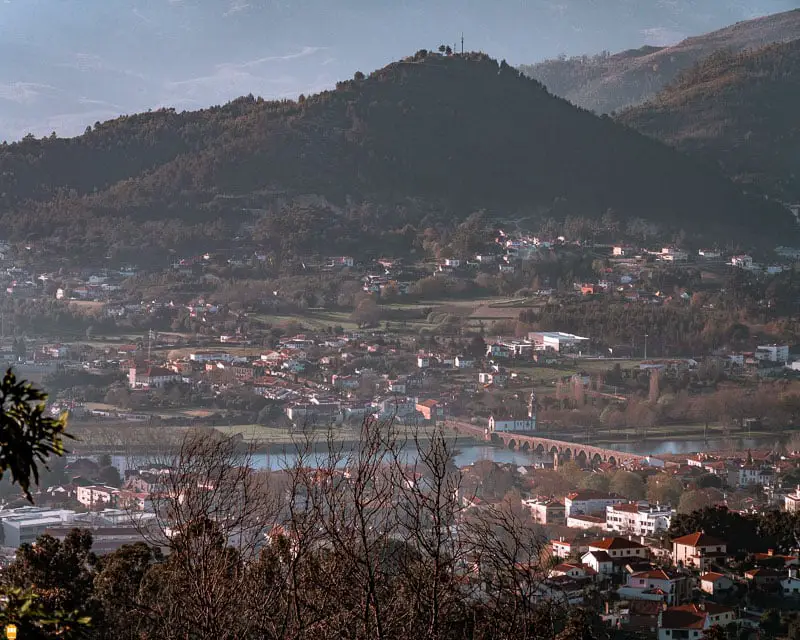
When you drive down Monte da Madalena, don’t hesitate to stop at the park Parque da Vila, a perfect place to stroll with your family. There, you will also find a pump track, a paradise for those who like to do stunts on their skates, bicycles and others.
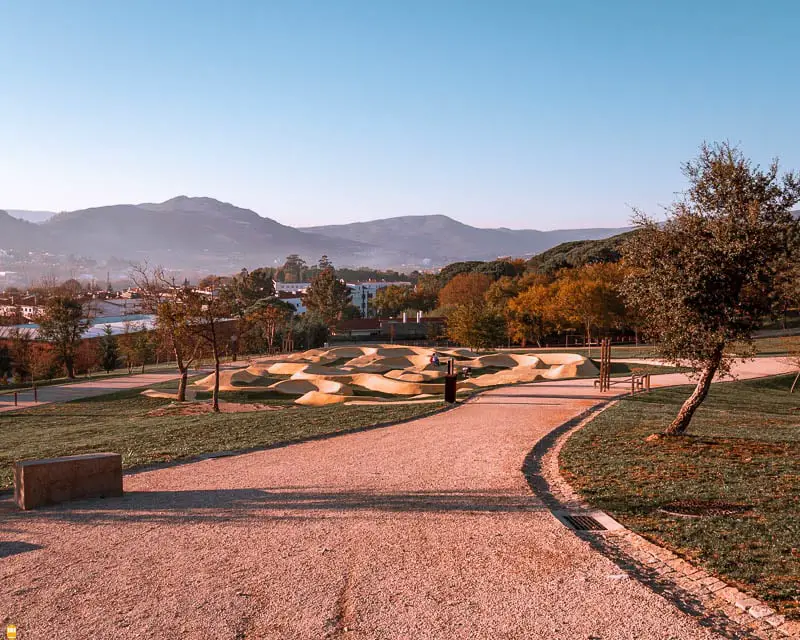
14. Lagoas de Bertiandos e S. Pedro de Arcos
Located north of Lima river and 8 km away from the historic centre, the Bertiandos e São Pedro de Arcos Nature Reserve has an area spanning for 350 ha.
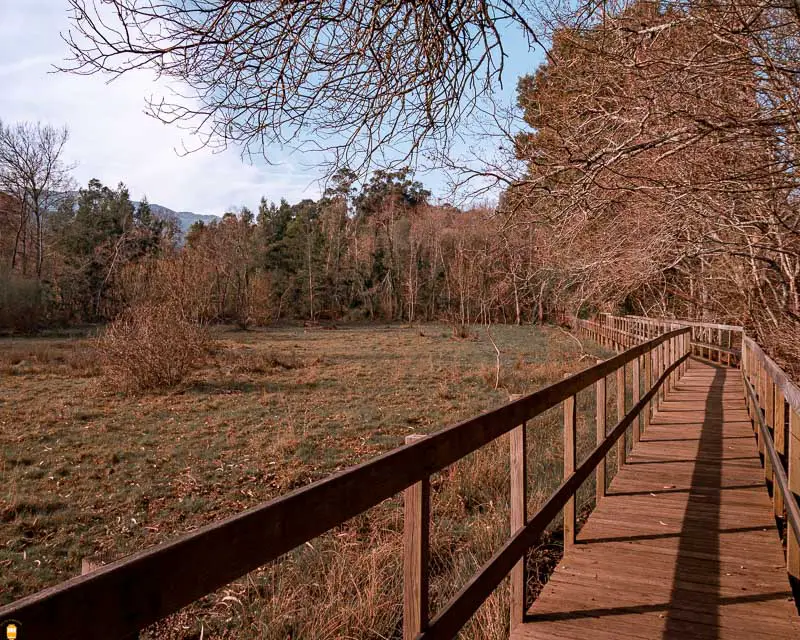

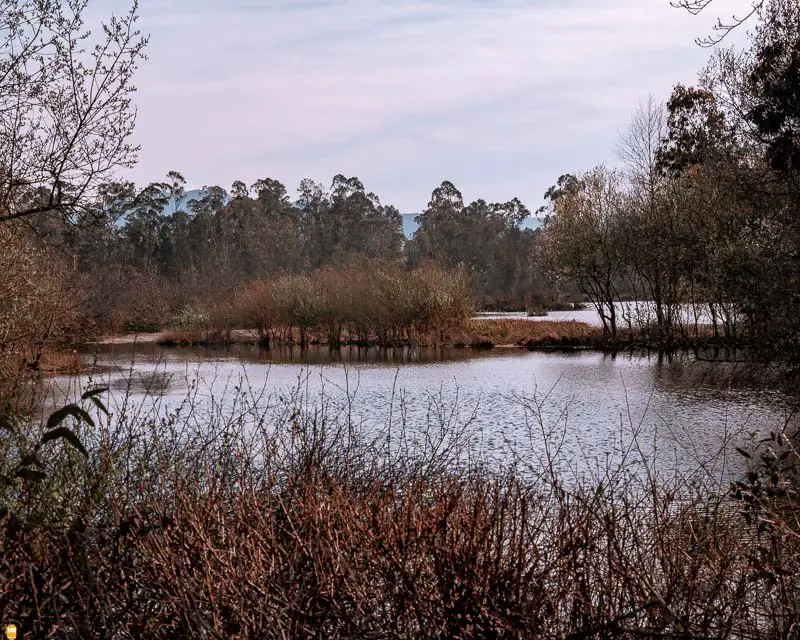
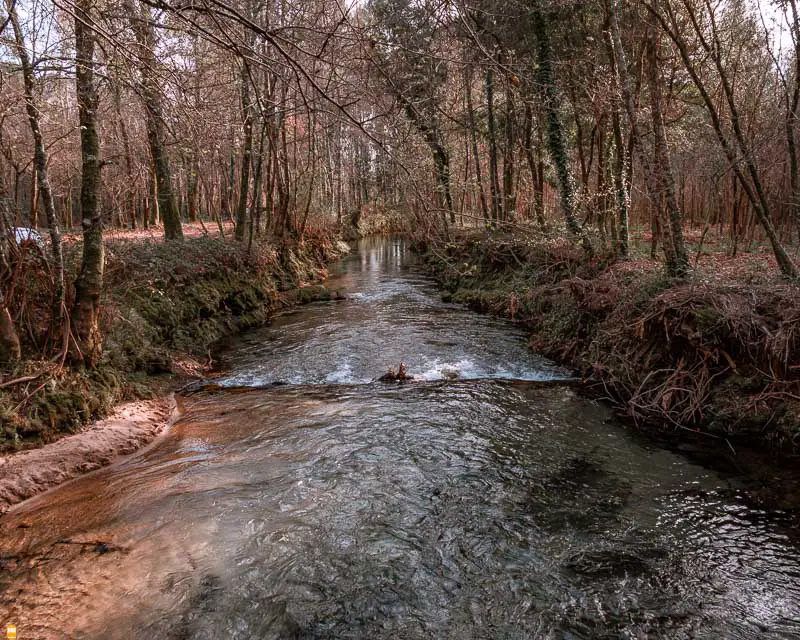
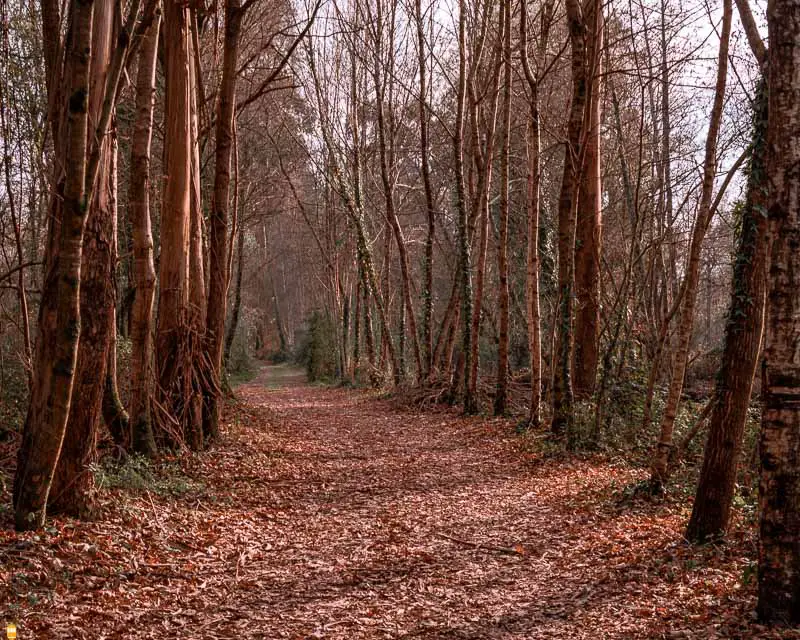
At this reserve you’ll find rare species that you won’t find in many places because of its damp habitat. In total, this location has over 500 plant species like holly, royal fern and yellow lily.
I must point out the presence of animal species of public interest, species that need protection like the otter, the Iberian frog, the water lizard, the peregrine falcon, the sea lamprey and others.
To discover this amazing place, you’ll have at your disposal several walking routes so that you can go for a stroll or hike in harmony with nature.
When I visited this place, I chose the circular route III (Percurso do Rio) that starts and ends at the Environmental Interpretation Centre (Centro de Interpretação Ambiental).
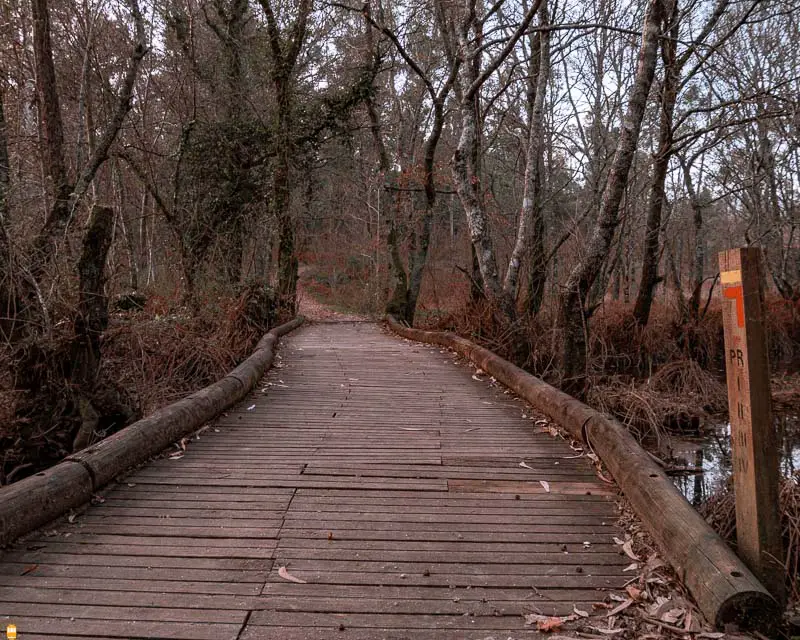
This 3-km route will show the most beautiful places of the nature reserve in just one hour.
If you have time and are used to long walks, then I suggest you choose a 10-km route so that you can discover the most beautiful places and the surrounding villages too. Start your visit at the Centro de Interpretação Ambiental where you’ll be given all the information about this nature reserve and its walking routes.
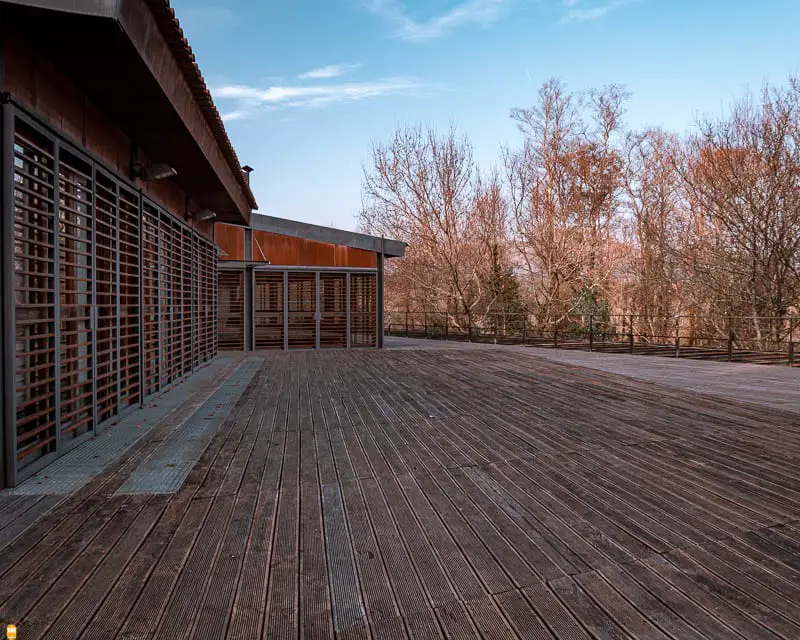
You can also visit the website of the reserve to check some photographs and information about the walking routes, for example. When you click a name of a walking route, you’ll have access to more information about that specific route and you can also download a leaflet in Portuguese or in English.
Information: apart from the walking routes of this nature reserve, you have the Ecovia das Lagoas connecting Ponte de Lima’s historic centre to the reserve, in a 9-km route.
After your visit to the reserve, make a stop at the village of Estorãos to admire its medieval bridge and its beautiful watermill.
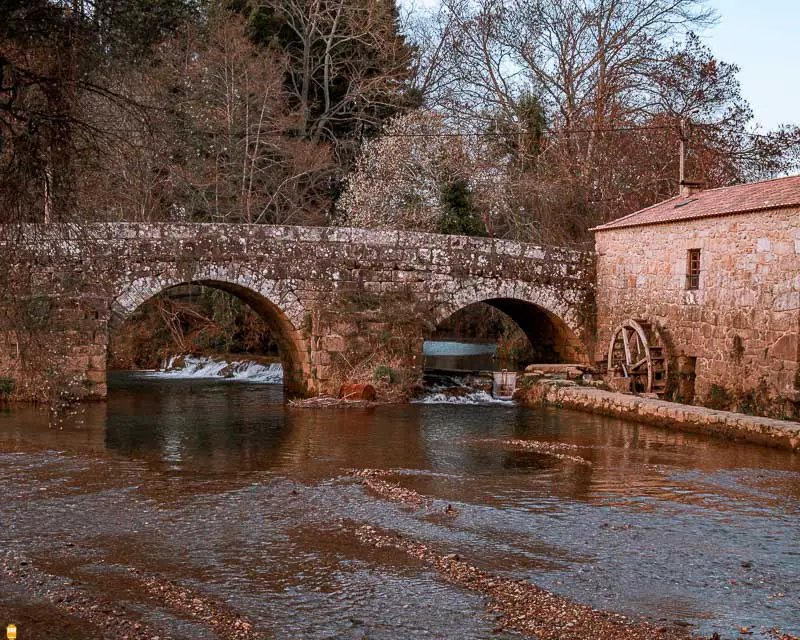
15. Santuário do Senhor do Socorro
Located at the village of Labruja and 12 km away from the historic centre, the sanctuary Santuário do Senhor do Socorro is one of the places you can’t miss during your visit to this region.
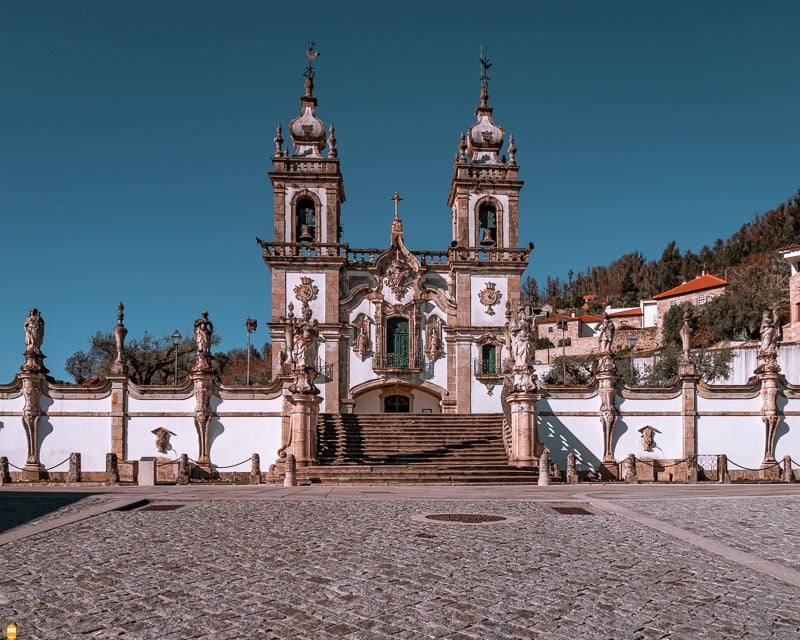
The devotion to Senhor do Socorro started due to some injuries a farmer had and that were cured. When people asked him what was the medicine he used, the farmer answered pointing to an old image of a saint that he received from a church: “Este é o meu Socorro…” (“This is my medicine…”).
Other people started invoking Senhor do Socorro to cure their aches and pains and some had their prayers answered. As the reputation of the miraculous image increased, the farmer decided to transfer it to a small chapel dedicated to Pope Saint Gregory.
The cult of Senhor do Socorro became more and more important and so a Brotherhood was formed. With the pittances and donations a beautiful sanctuary was built. The date of its construction was 1773 and it is inscribed in the arch, at the entrance of the church.
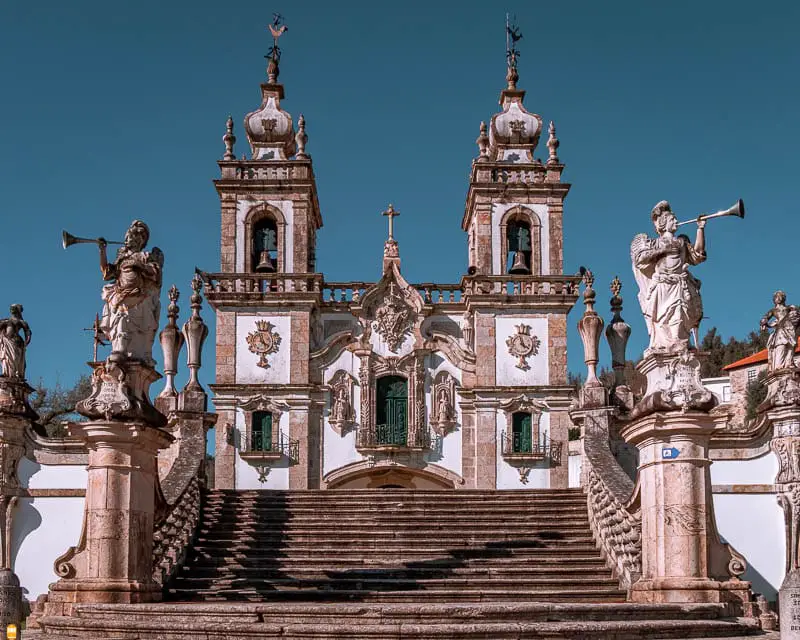
Information: the pilgrimage to Senhor do Socorro happens on the first Sunday of July.
When to visit Ponte de Lima
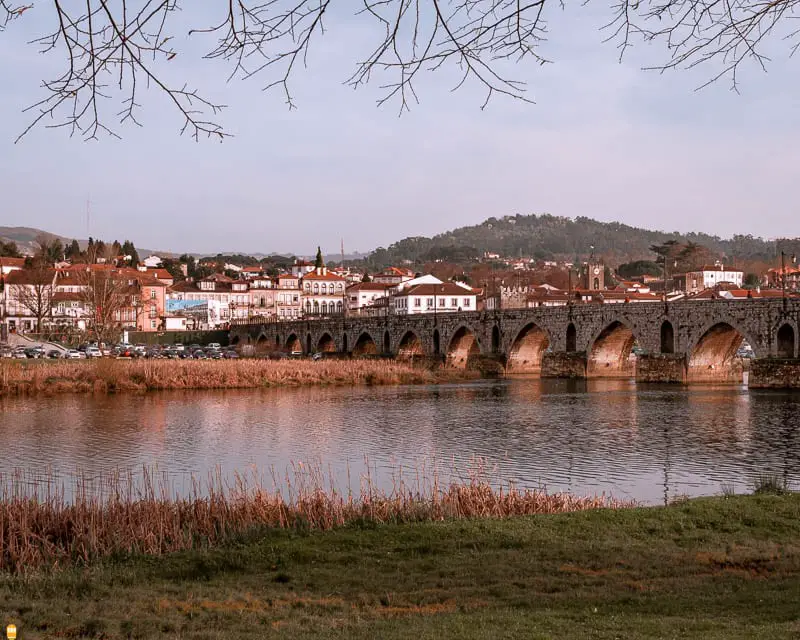
In “normal” days, the town is pleasant and perfect for those who enjoy walking freely through the streets.
If, however, you want to discover a more joyful town, you can visit it during the Feira Quinzenal de Ponte de Lima (biweekly fair) that takes place on Mondays (see dates here) close to the medieval bridge, since the foundation of the Portuguese nation.
The inhabitants of the surrounding villages wait for this day to go to Ponte de Lima (by car but mostly by bus) to purchase things they need such as food, clothes and tools to work on the fields.
You will also have the opportunity to go to an antiquity and collecting fair every two weeks, in Avenida dos Plátanos, and to a handicraft exhibition.
One of the festivities you can’t miss is “Vaca das Cordas”, a tradition that dates back to the 15th century. On the eve of Corpus Christi a tradition carries on: tie an ox with ropes and lead it through the streets of the historic centre.
Check the following video to get an idea:
The celebration carries on until the end of the night in bars of this town where people can listen to Portuguese folk music as well as from other countries while they eat the typical snacks.
In the next day, a religious ceremony takes place with a procession through the streets of the historic centre, on flower carpets created specifically for this occasion. Click here to admire some of the flower carpets.
Information: the “Vaca das Cordas” happens 60 days after Easter. To find out the exact date, click here.
Ponte de Lima’s biggest festivity welcomes thousands of visitors each year from Portugal and other countries and is one that you can’t miss! “Feiras Novas” is the popular name given to this festivity honouring Our Lady of Sorrows. The festivity takes place on the second weekend of September and lasts four days.
Celebrated since 1826, this festivity will show you the traditions of this beautiful region. For four days, the town offers concerts of traditional music, with folkloric groups, ethnographic and historical processions, street bars and restaurants, carousels, amazing fireworks and a procession honouring Our Lady of Sorrows.
Guided tour to Ponte de Lima
Information: you don’t want to hire a car nor prepare a tour to explore this region? If that’s the case and if you are staying in Porto, consider booking a guided tour to Alto Minho . Considered one of the most authentic regions of Portugal, here you will have the opportunity to start by discovering the beautiful city of Viana do Castelo.
There, take a walking tour to get to know the historic centre and admire the beautiful buildings as well as the medieval streets. The visit to this city will end with a stop at the sanctuary Santuário de Santa Luzia from where you can enjoy the magnificent views over the city and the Atlantic Ocean.
Next, this experience will take you to what is known as the oldest town in Portugal: Ponte de Lima. After lunch, get to know the unique atmosphere of this town and be sure to cross the landmark that gave the name to this place, the beautiful Roman and medieval bridge.
To end your tour to Alto Minho, you will also follow the Lima river through the mountains of the Peneda-Gerês National Park where you will have a last stop at a village where you will savour the tasty Verde wine.
What to eat in Ponte de Lima
If you enjoy eating local specialities when you travel then, during your visit to Ponte de Lima, I suggest you try arroz de sarrabulho, a traditional dish made of rice, pork, beef and chicken meat and pig’s blood. Yes, you read it right, pig’s blood!
When we first think of it, the dish doesn’t sound that delicious but if we ignore the fact that it contains blood, you’ll surely love this delicacy.
To enjoy this speciality, I suggest you go to the restaurants São Nicolau, located 700 metres away from the medieval bridge, Manuel Padeiro, in the heart of the historic centre, or A Carvalheira, located 5 km away from the town.
Apart from this delicacy, Ponte de Lima has other traditional dishes such as lamprey rice, codfish in onion stew, “naco de minhota” (juicy and tender beef) and, for dessert, crème brulée, made of milk, eggs and sugar.
How to get to and move around in Ponte de Lima
To Ponte de Lima
To get to Ponte de Lima, you only have two choices: by car or by bus.
My suggestion is that you choose to drive there so that you can also have the opportunity to visit the outskirts.
If you’re only interested in getting to know the historic centre, you can choose going by bus – there’s a bus stop in the avenue Avenida António Feijó and the bus station is at the Central de Camionagem.
You’ll have at your disposal several buses everyday connecting Ponte de Lima to Viana do Castelo and Porto, passing through Braga as well. For the routes from/to Porto, you can also visit Rede Expressos website.
In Ponte de Lima
If you’re driving to Ponte de Lima, I suggest you park your car close to the medieval bridge (free parking). On the fair days, you can park your car in the underground parking lot Parque do Mercado (paying park) or in the Plátanos parking lot (free parking).
You can visit on foot all the points of interest in the historic centre and then drive to the three places located in the outskirts.
Where to sleep in Ponte de Lima
Located 5 km outside Ponte de Lima’s historic centre, this 5-star hotel is one where you will want to spend the night! Its contemporary design presents luxurious details combined with details of Portuguese culture; you can also enjoy a meal at the restaurant that serves, among others, local dishes and the best of the Portuguese gastronomy.
Located just 500 metres away from the historic centre, INLIMA is an amazing 4-star hotel and one of the favourite hotels of people visiting Ponte de Lima. With all the amenities one can ask, this hotel stands out for its modern design and its relaxed atmosphere.
Considered one of the best hotels in Ponte de Lima, Paço do Vitorino is located close to the south bank of Lima river. The rooms offer magnificent views over the river, the garden or surrounding nature; the interior of this accommodation stands out for its sophistication and details like a small but beautiful library and two lounges with fireplace for the cold days.
This accommodation is a guest house located at the heart of Ponte de Lima’s historic centre and is one of the favourite places for people wanting to spend the night in this region. One of the things that stands out is its beautiful decoration, both rustic and modern, giving its guests a feeling of being inhabitants of this Portuguese town.
Arc My Otel is a hotel located close to the north bank of Lima river, a few metres away from the museums Museu do Brinquedo and Museu Rural and from the beautiful Roman bridge, landmark of this town. Apart from the proximity to these points of interest, you should also know that this accommodation offers the most beautiful views over the river and town, in a perfect scenario you don’t want to miss.
Axis Ponte de Lima Golf Resort Hotel
The hotel Axis Ponte de Lima is another accommodation you should consider for your stay in this town. Here, you’ll have the guarantee of finding the best service at affordable prices. Among other amenities, at this hotel you can play golf and tennis or enjoy its fitness centre; its restaurant serves the best Portuguese dishes but from other countries too.
Information: the links to the hotels are affiliate links toBooking.com, which means that, if you make a reservation in one of these hotels, I’ll earn a small commission from Booking.com. You won’t pay more for making your reservation through this links.
Apart from discovering the beautiful locations I talked about in this article, when you visit Ponte de Lima you can also enjoy something few places have to offer: the authenticity of its inhabitants, proud of their traditions. One thing is certain – they’ll welcome you with open arms.
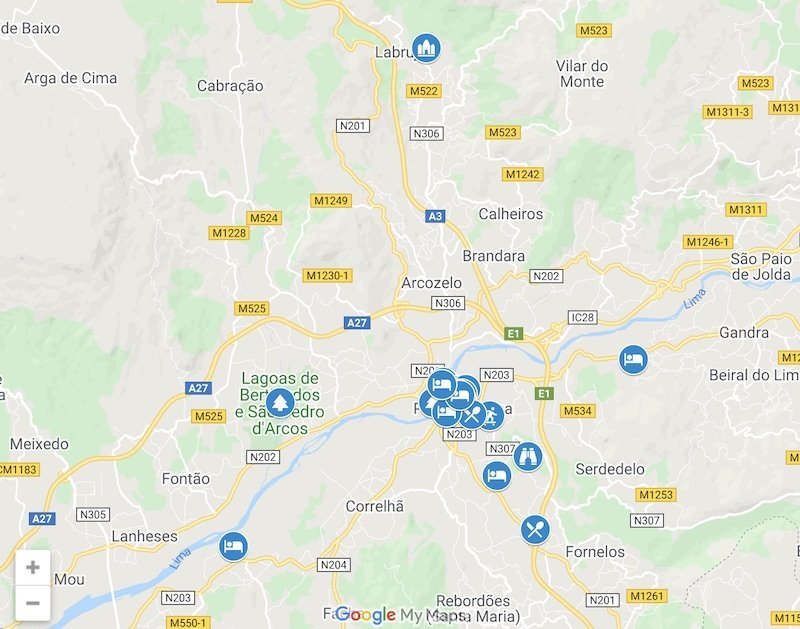
Are you going to visit Porto? Then don’t hesitate to book your hotel room, your car or the best activities by clicking the links below. This way you are helping me in the development of my blog and I’ll be able to offer you free tips and travel guides so that you can better prepare your visit to Portugal. Thank you!
What will also interest you:
- 7-Day travel guide to visit Porto and Minho (Guimarães, Braga, Ponte de Lima, Viana do Castelo)
- Top 10 of the places to visit in Northern Portugal
- Top 20 Things to do in Viana do Castelo
- Things to do in Guimarães, the birthplace of Portugal
- Top of the things to do in Braga
- Top of the places to visit in Peneda-Gerês National Park

